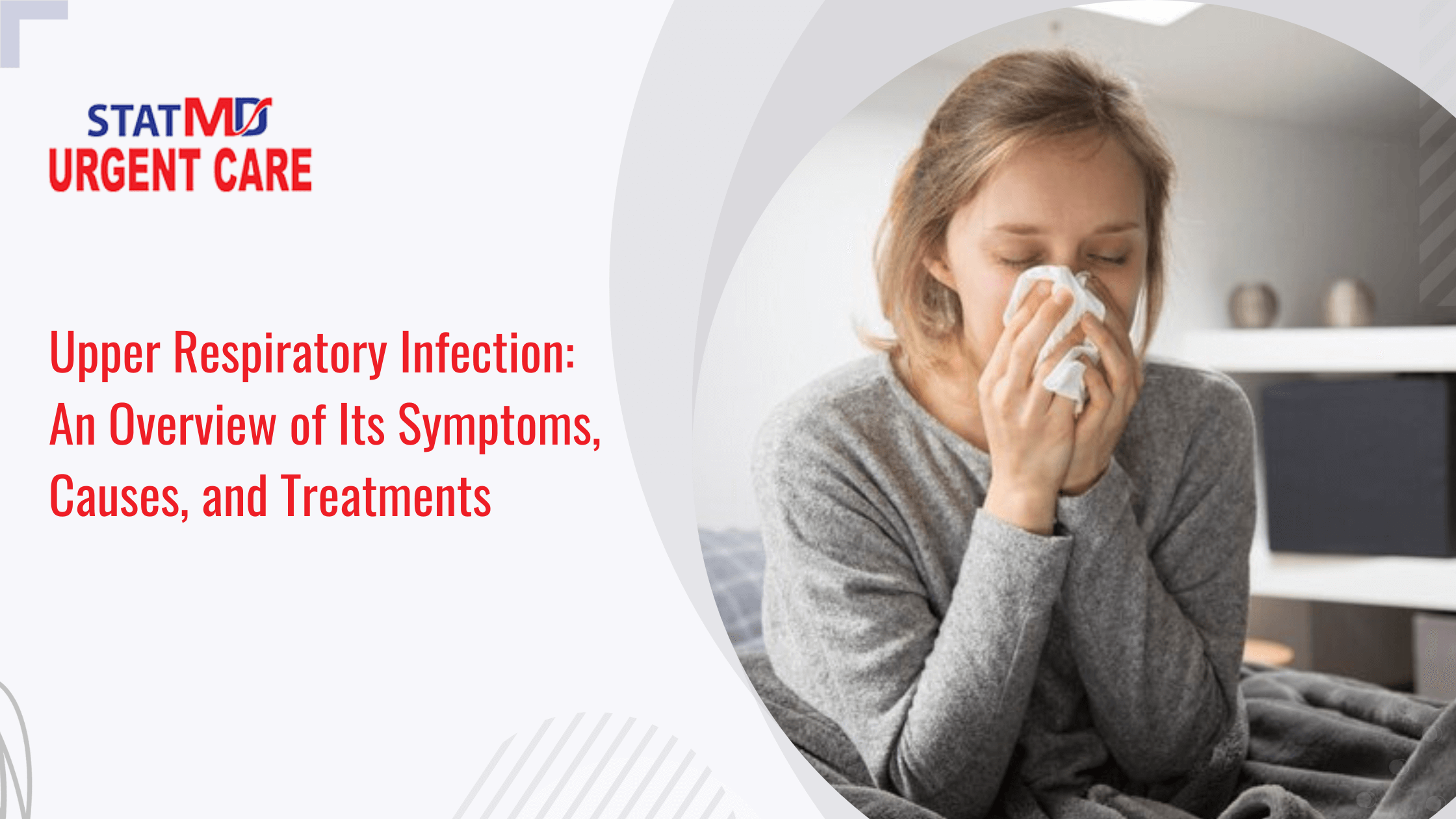
Flu Shots Now Available Don't Miss Out on Limited Supply!
For Young St: (661) 464-5000
For Panama Lane: (661) 464-5001

The upper respiratory tract comprises the sinuses, nasal passages, pharynx, and larynx. Upper respiratory infections (URI) are among the top three diagnoses in the outpatient setting and account for nearly 10 million outpatient visits yearly. While adults get URIs twice or thrice annually, children suffer more frequently, with up to 8 infections a year. This is reflected in over 20 million missed school days among children.
This blog discusses URI symptoms, types, causes, risk factors, and upper respiratory infection treatment options.
The upper respiratory infection symptoms include:
You may also experience:
Based on the upper respiratory tract part that is infected, upper respiratory infections can be classified into:
1. The Common Cold
This viral infection affects your nose and throat. You have a sore throat, runny nose, and aching muscles, and the symptoms have continued for over a week. In most cases, you get relief with home remedies. However, you must consult a doctor if the symptoms persist or worsen.
2. Sinusitis
Sinusitis is the inflammation of the sinus. It causes pain in the forehead, cheeks, and around the eyes. Some other symptoms include fever, nasal congestion, thick nasal discharge, reduced sense of smell, headache, and bad breath.
3. Laryngitis
Laryngitis affects your larynx or voice box. The larynx swells, causing your voice to sound hoarse. It may even lead to temporary loss of voice. Also, there is an irritation in the throat due to a persistent cough and sore throat.
4. Pharyngitis
Pharyngitis refers to the inflammation of the pharynx. The throat feels scratchy, which may cause difficulty swallowing. Other symptoms include fever and headache.
Viruses or bacteria cause upper respiratory infections. When they sneeze or cough, an infected individual's expelled saliva and mucus droplets either disperse into the air or land on surfaces. You get URI when you breathe in the droplets or touch the contaminated surfaces.
Those who are more prone to upper respiratory infections include:
The risks of getting infected while playing with other children are higher among children. Also, their tendency to put their fingers in their mouths, nose, or eyes and being careless about washing their hands regularly facilitate the spread of germs.
Patients with asthma, chronic obstructive pulmonary disease (COPD), or cystic fibrosis are more prone to getting upper respiratory infections due to their existing medical conditions.
Individuals with damaged immune systems, such as HIV and severe burn injury patients, or those who have undergone chemotherapy or suffer from malnutrition. Individuals with weakened immunity due to genetic anomalies such as T-cell and B-cell deficiencies.
Several risk factors cause children and adults to get upper respiratory infections multiple times each year. They are:
In most cases, you can get relief from upper respiratory infection symptoms by following certain home care strategies such as:
For further relief, you may also use some over-the-counter (OTC) medications:
Upper respiratory infections affect your upper respiratory tract. They are highly contagious viral or bacterial infections, and you can expect to have URIs several times a year. URI symptoms, including a runny and blocked nose, sore throat, fever, and body aches, can extend for 7-10 days. While mild symptoms resolve with home care and OTC medicines, if the symptoms continue or your health deteriorates, you should consult a doctor for respiratory infection treatment as soon as possible.
The licensed and experienced physicians at StatMD Urgent Care offer prompt, high-quality, and affordable treatments for a wide range of non-life-threatening upper respiratory infections. We are committed to serving the Bakersfield community with the highest standards of medical care, provided with compassion while focusing on your comfort and safety. Contact us today if you are looking for the best urgent care in Bakersfield for respiratory infection treatment near you.